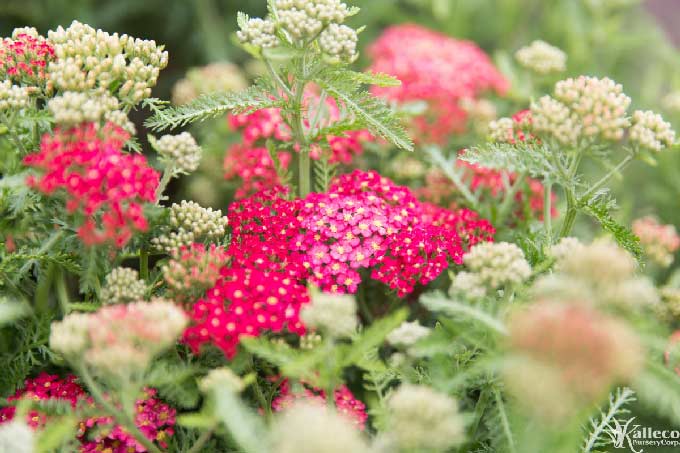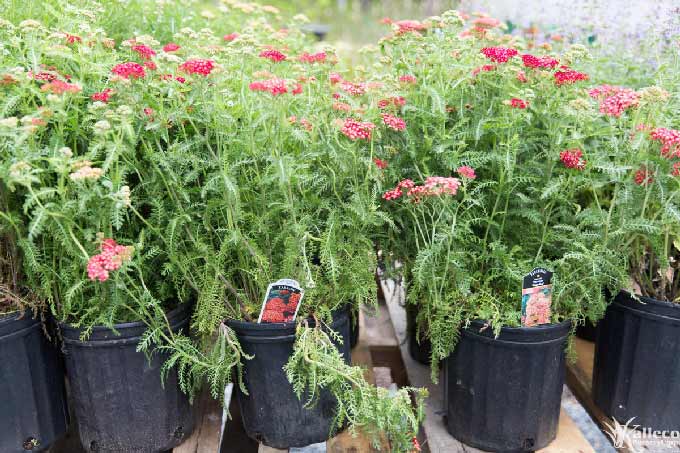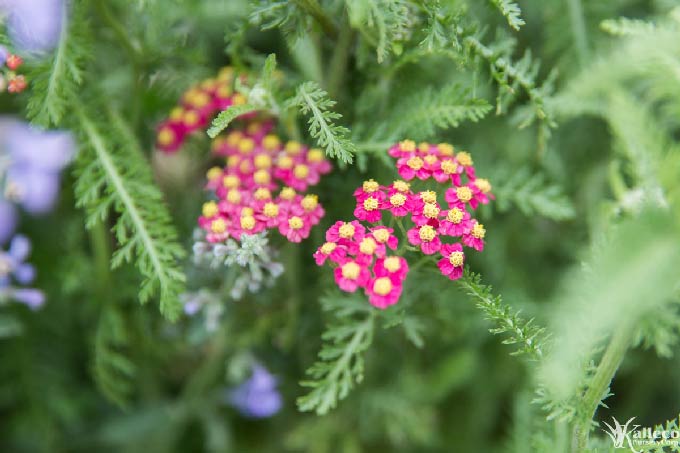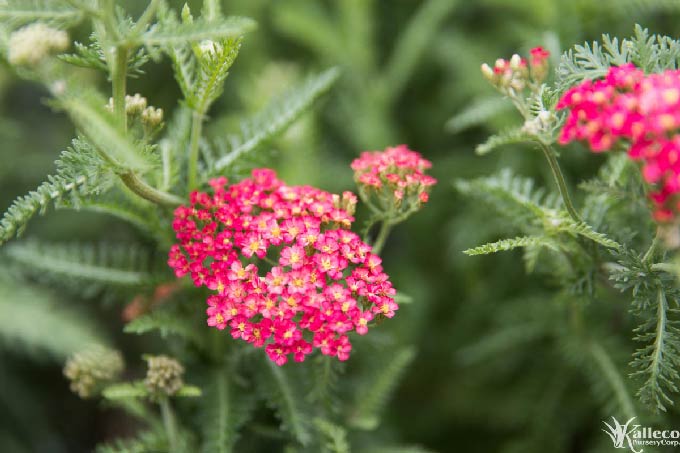Common Names: Yarrow, Milefoil
Common Varieties: “Paprika” (red), “Appleblossom” (pink), “Coronation Gold” (golden yellow), “Gypsy White” (white), “Peachy Peach Sensation” (peach).
Description: Yarrow is a flowering perennial featuring tight, flat clusters of bright flowers atop long green stems. The flowers themselves range in color from white to deep red, with pinks, yellows, and golds in between. All of them feature a bright yellow center, which pops out as the flowers mature. The foliage is long and lacy, and usually silver-green in color.
Generally, Yarrow grows to about 18” in height, but some can reach 3’. They have a mounding tendency though the stems are fairly rigid.
A Versatile Plant: Yarrow is found all over Europe, Asia, and North America. Historically, it was valued for its medicinal properties. Yarrow can be used as an astringent to treat minor cuts and scrapes. It’s also been common as an ingredient in tea, soups, beers and other alcoholic beverages – its oil can even be used as a mosquito deterrent.
In the garden, Yarrow is an excellent companion plant. Its foliage wards off pests and attracts helpful pollinators. Its flowers are a favorite of butterflies and bees, and its leaves feed caterpillars of all kinds. Due to its high drought tolerance, it’s ideal for erosion control. It also makes a great cut flower!
Planting and Care: Yarrow likes full sun and well-drained soil. If you buy a potted variety, establishment can be a little tricky. Work compost into the soil where you plan to plant it and water it generously for the first season. Once established, yarrow is extremely drought tolerant, fast-growing, and very hardy.
Pruning should be performed after the first frost. Cut stems back 2″ – 3″ to keep it neat. Get continual blooms by deadheading any spent flowers through the season. If cared for correctly, yarrow can bloom from late spring through the early fall.
Special Features: Drought tolerant, fast growing, low maintenance, pollinator attracting, second bloom, hardy, pest repellent, erosion control.
Design Tips: Plant in a pollinator garden to feed caterpillars, butterflies and bees! It’s great for dry, sunny spots. Get some contrast by planting yellow, red, and gold varieties with lavender, catmint or purple salvia.








